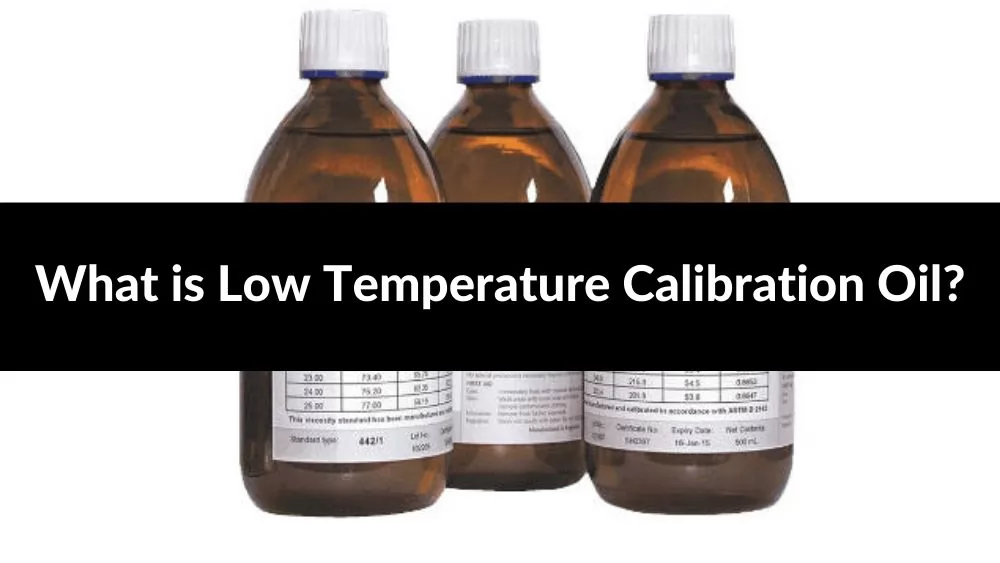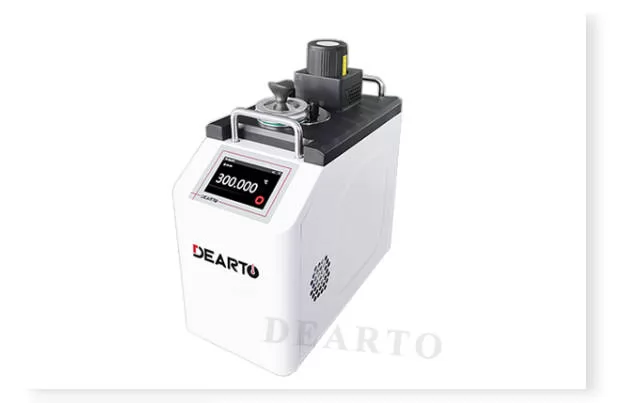
In the realm of industrial and scientific research, temperature calibration is a critical process, and one tool stands out as indispensable: Low Temperature Calibration Oil. Ensuring the accuracy of experimental data and the efficiency of production processes, this oil plays a vital role. In practical production or research, if there is an error in the key parameter of temperature, it could mean that the final result deviates significantly from the normal value. This could lead to the need to overturn and restart all production or experiments, resulting in immeasurable economic losses. To write this article, I have meticulously reviewed relevant literature and consulted with industry experts. The content that follows aims to provide you with a comprehensive understanding of Low Temperature Calibration Oil.
List of Contents: |
What is Low Temperature Calibration Oil?
Low temperature calibration oil is a liquid designed for temperature calibration and testing under low temperature conditions. Its usually applicable temperature range is roughly between minus 50 degrees Celsius and minus 80 degrees Celsius. Low temperature calibration oils are often used with low temperature calibration equipment, such as low temperature oil bath temperature calibrators
How Low Temperature Calibration Oil Works?
Low temperature calibration oil typically needs to work together with a low-temperature calibrator. The principle is based on a closed aluminum tube, with an internal open concentric tube placed near the bottom, allowing the low-temperature calibration oil to circulate freely around it. Circulation is achieved by a stirring propeller at the bottom, and the calibration zone is located within the inner tube. Heating power is provided by two different heaters, with a main heater wrapped around the outside of the outer tube and another placed in the space between the cylinders. The main heater acts as a protective heater and provides constant power to keep the outer wall temperature stable just below the set point. The second smaller heater performs adjustments with the assistance of a commercial controller.
Where is Low Temperature Calibration Oil Used?
Calibration bath: The biggest role of low-temperature calibration oil is in calibration bath, which is used to accurately calibrate thermometers and other temperature-sensitive instruments.
Metallurgical coal floating and sinking test: Low temperature calibration oil can replace tetrachlorethylene for the floating and sinking (washability) analysis of metallurgical coal. This non-toxic, non-fire hazard, chemically inert nature ensures the accuracy and safety of coal quality assessments critical to steel production.
Hazardous operations: Low-temperature calibration oil has excellent heat transfer capabilities, and it can maintain flow at low temperatures without freezing, so it is designed for hazardous operations at low temperatures.
For Use with Reactive Gases, Lewis Acids and Radical Oxidizers: Cryogenic Calibration Oil is a non-flammable, non-reactive, chemically inert oil suitable for use with reactive gases, Lewis acids and radical oxidizers.

Characteristics of Low Temperature Calibration Oil
Ultra-low temperature tolerance: Low temperature calibration oil maintains its inherently low viscosity even at extremely low temperatures (such as -100°C). This ultra-low temperature tolerance ensures that it can still work normally at ultra-low temperatures without impairing calibration performance.
Thermal stability: Unlike silicone oils that form gels, low temperature calibration oils do not oxidize or polymerize when heated. In this way, the low-temperature calibration oil can maintain optimal performance when the temperature fluctuates, and the calibration results will not fluctuate with temperature changes. Therefore, it provides good reproducibility for scientific experiments and is one of the favorite experimental materials for scientists in related fields.
Long shelf life: Low temperature calibration oil has an extremely long shelf life, generally up to ten years, depending on the product of different manufacturers.
Precautions for Use
Since the working environment of low-temperature calibration oil may be as low as minus 50 degrees Celsius, it is particularly important to understand some safety regulations and precautions when using it at low temperatures.
Here are some suggestions:
-
Always wear appropriate protective equipment such as gloves, aprons, and face shields appropriate for the working temperature and fluid.
-
Maintain proper ventilation to ensure a fresh working environment.
-
Do not mix different liquids or add any chemicals to liquids.
-
Avoid adding substances to the calibration bath that may cause chemical or physical reactions.
-
Avoid contact of hot salt or oil with water.
-
Only clean sensors or probes should be inserted into the active calibration tank.
-
Make sure there are no flammable materials around the calibration tank and keep the environment clean.
-
Ensure that appropriate fire-fighting equipment is nearby.
-
When using liquids from calibration tanks, always avoid using liquids above the specified flash point. Special care is required with liquids such as alcohol, as their flash points may be lower than ambient temperature.

Common Issues of Low Temperature Calibration Oil
Inaccurate Readings: Inaccurate oil pressure gauge readings are one of the most common problems. There are many reasons. It may be that the low-temperature calibration oil has oxidized, or it may be the operator's personal error.
Health Risks: If proper ventilation such as a fume hood is not installed, operators may inhale invisible harmful fumes.
Untimely equipment maintenance: If the low-temperature calibration oil bath is not regularly cleaned and calibrated for equipment cleaning and calibration inspections, the performance and life of the equipment may be affected.
Conclusion
Low temperature calibration oil play a critical role in maintaining the accuracy and reliability of temperature measurement instruments and thermal imaging systems in various industries. As technology continues to advance, the future of cryogenic calibration oils looks promising, with increasing accuracy, reliability and adaptability to meet the ever-changing requirements of temperature calibration applications. For more information and product purchases in the field of temperature measurement and calibration, please feel free to contact us. We are DEARTO Instrument from China, which can provide you with complete solutions for professional temperature and humidity calibration and measurement. The company focuses on the research, development and manufacturing of temperature and humus. Adhere to independent innovation and strive to create an industry model of smart temperature and smart sleep.



